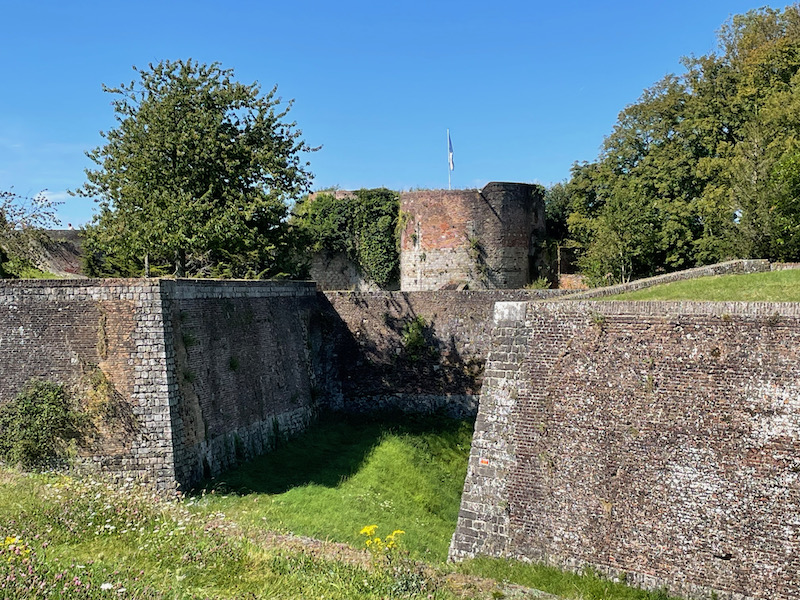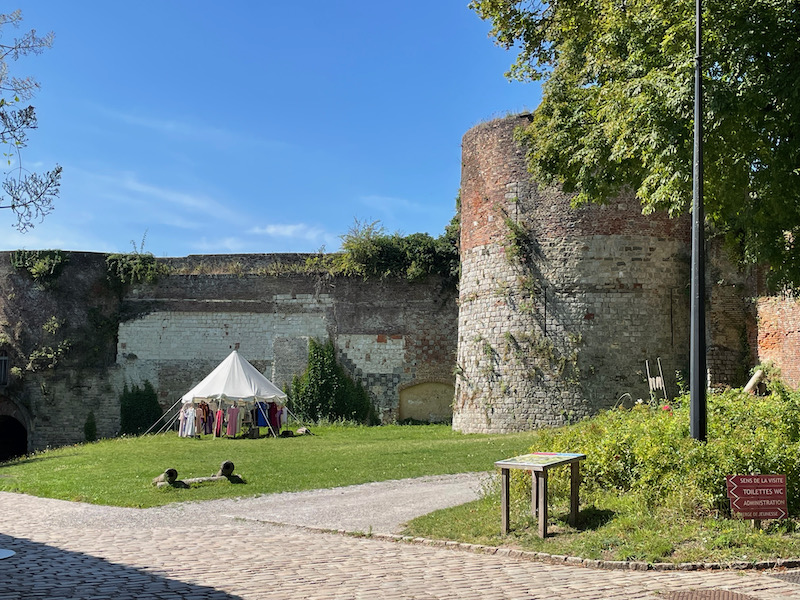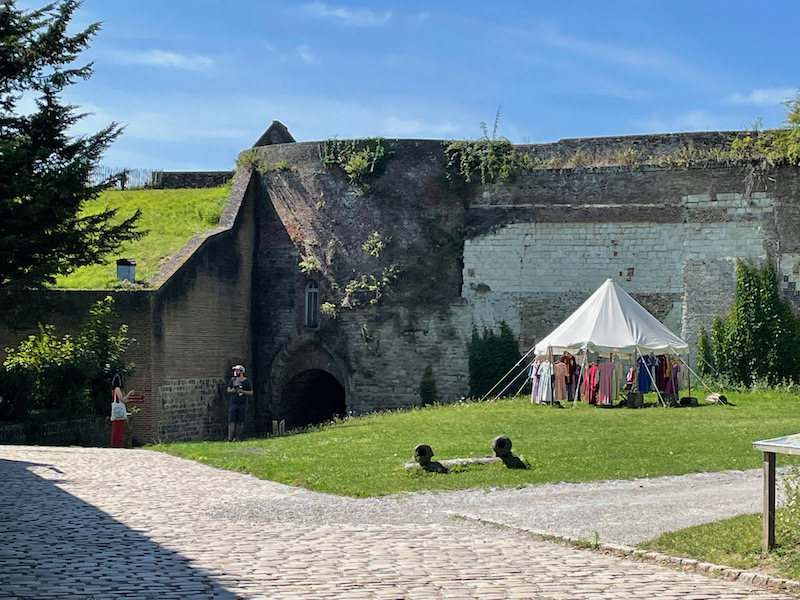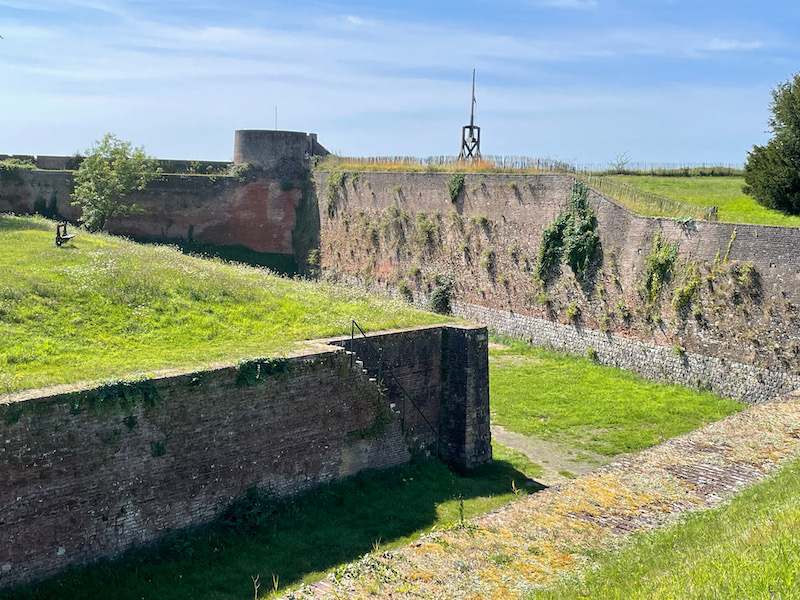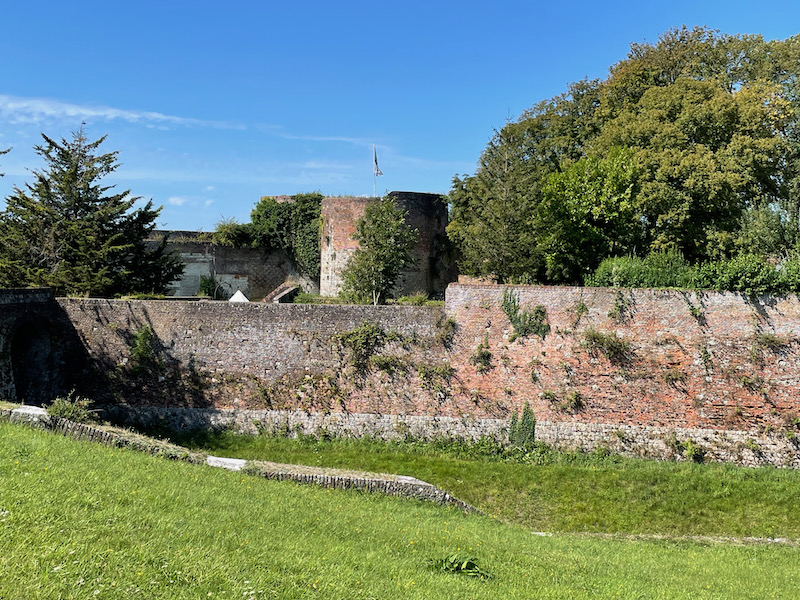Our Blog - Summer 2024 Trip - Montreuil-sur-Mer, France
The town is first mentioned in 898 and there is a castle here that dates from the 9th century. In 1091, King Philip I had his wife, Berthe of Holland, locked up in the castle here. A powerful royal castle was built by Philippe August at the beginning of the 13th century and significant elements still remain. There are two parts: a upper town that is known for its fortifications and ramparts dating from the 13th and 16th centuries.
The lower town is marshy with little bits of water everywhere. The Canche River meanders through the marshes and, during the Middle Ages, it was one of the wealthiest ports in northern Europe. The river is now silted up, but back then, the quays were busy with sailing ships bringing pilgrims to the holy relics in its churches as well as cloth, grain, and wine.
The "sur-Mer" part was added in Jan 2023 although it has been called Montreuil-sur-Mer since medieval times. Originally, the addition of "sur-Mer" was rejected because it isn't actually on the water but 10km inland. There is another Montreuil outside of Paris that is usually called Montreuil-sous-Bois and a Montreuil-sur-Mer in the Vendée department that changed its name to just Montreuil in 1945.
In 1837, Victor Hugo passed through Montreuil-sur-Mer at the end of a long journey. He only stayed a few hours within the city walls but he decided to set an important part of his novel Les Miserables there. The former convict, Jean Valjean, will redeem himself in this medieval city and will even become mayor. To celebrate this, the town organizes a very ambitious sound and light show every summer, within the walls of the citadel.
The Monument aux morts de 1914-1918 was inaugurated in 1921. It is composed of a winged victory kissing a "Poilu" (nickname for a WWI soldier in the trenches) on the forehead. It is crowned with the city's arms and bears, inscribed, the 108 names of the soldiers from Montreuil-sur-Mer who died in WWI. Following the war, the British authorities placed marble plaques on certain houses in the town, in memory of their soldiers who died in town. In 1951, the names of the 18 who died in the Second World War were added as well as those of the 4 who died in the Indochina War.
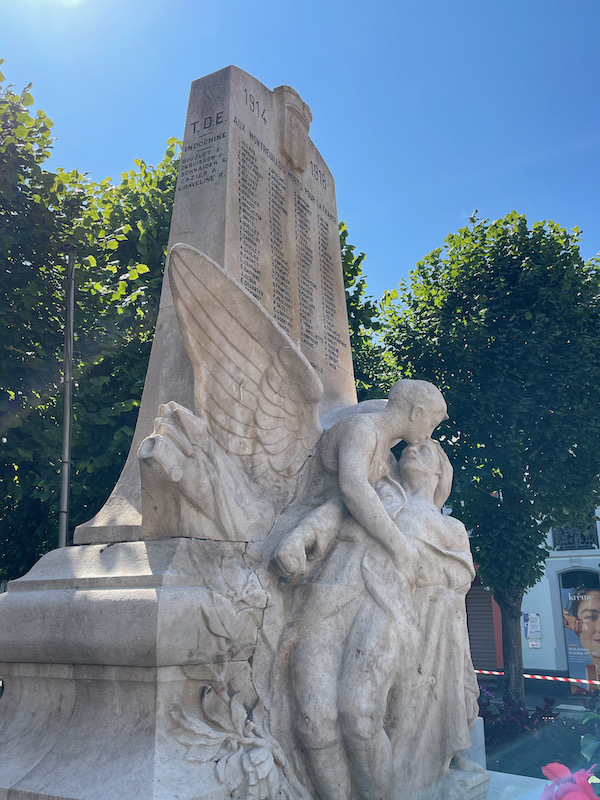
The Abbey Church of Saint-Saulve was originally built during the 12th century, but was remodeled in the 13th and 16th centuries after a fire caused the vaults to collapse.
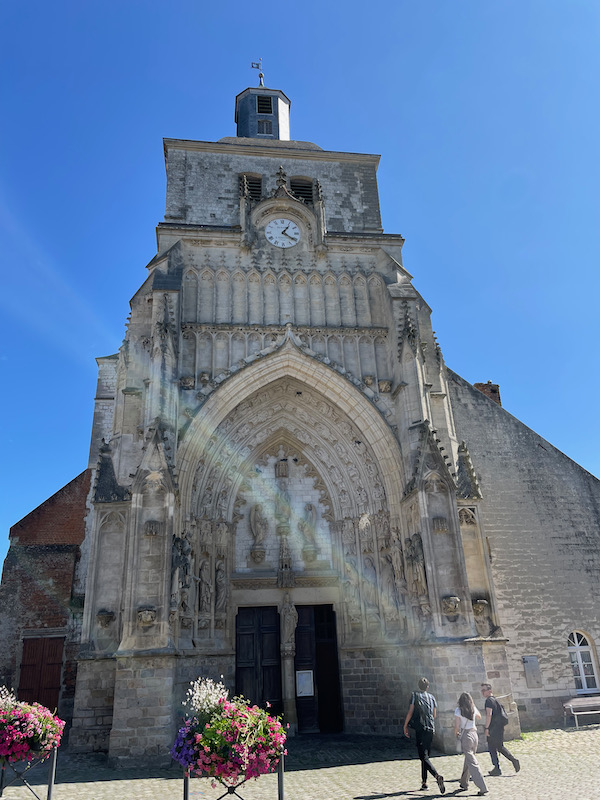
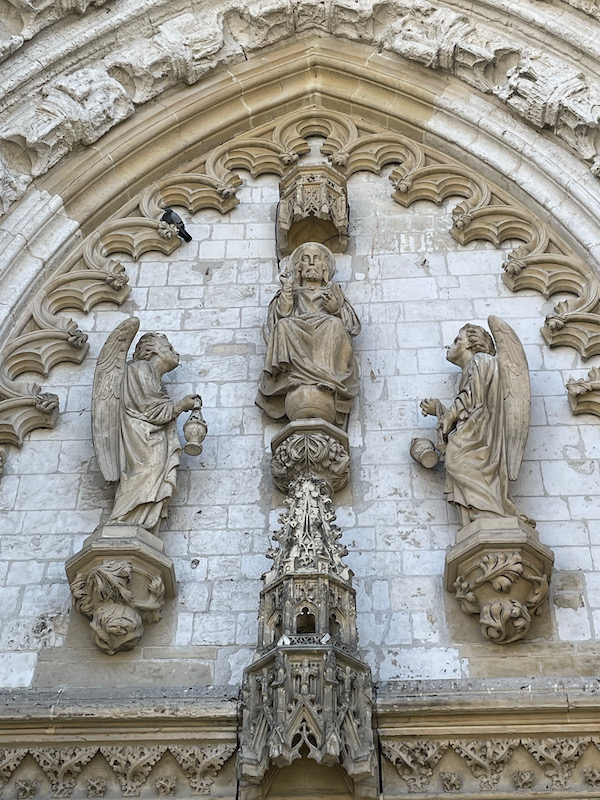
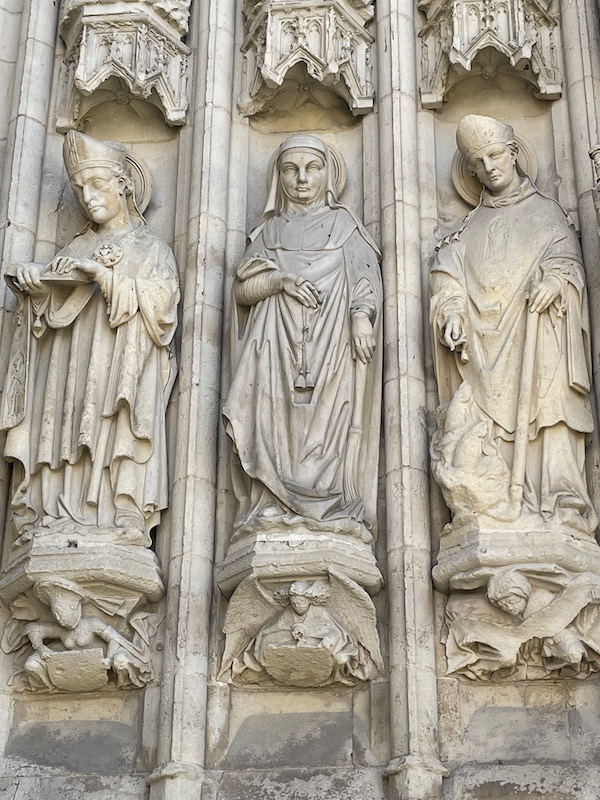
The nave has 8 bays, with side aisles separated by Gothic arches supported by robust octagonal pillars. You can see the tiny non-windows on the upper level (2nd picture) ... the vault was lowered after the fire in 1537 and when the vaults were rebuilt, they were lowered.
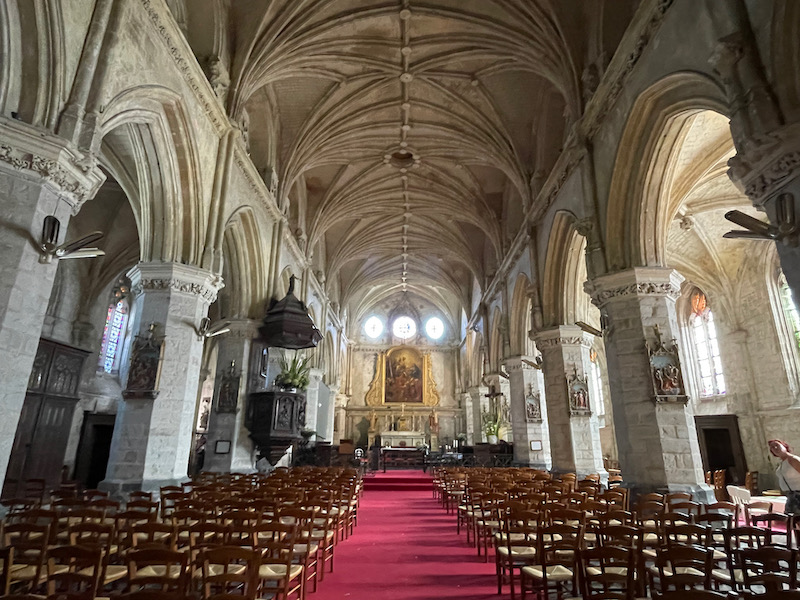
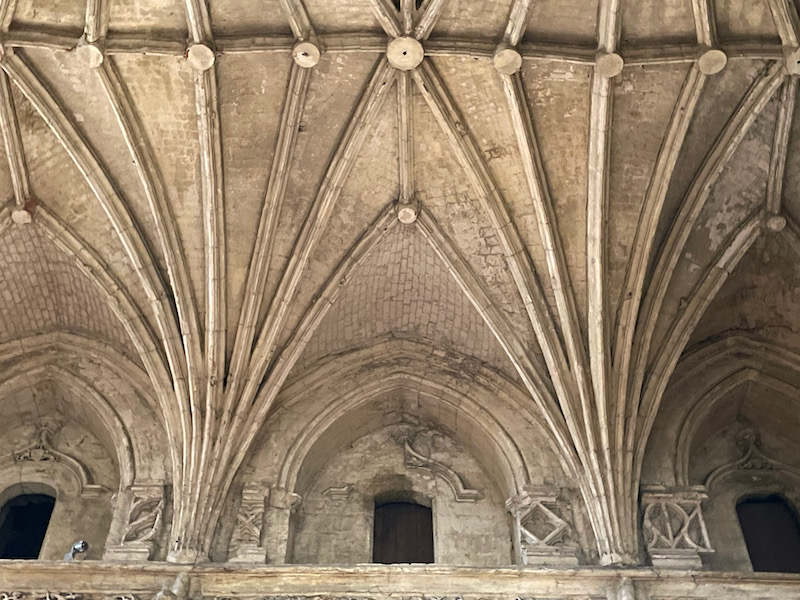
Only one stained-glass window, this one representing the nativity.
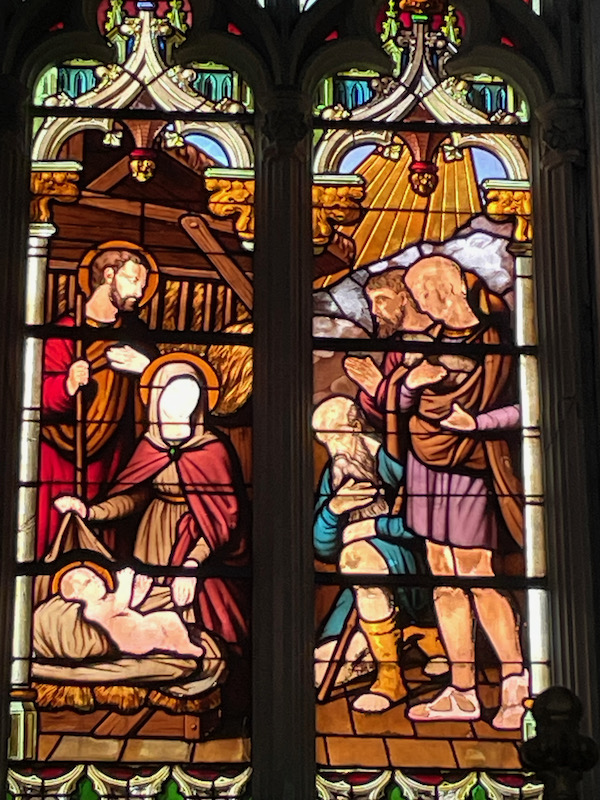
The altars on the North and South aisles are actually more impressive (in my opinion) than the main altar.
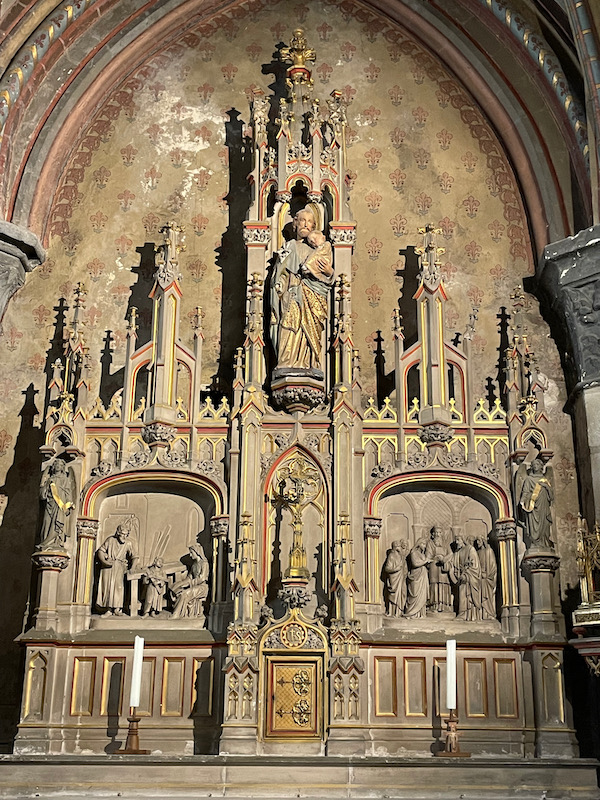
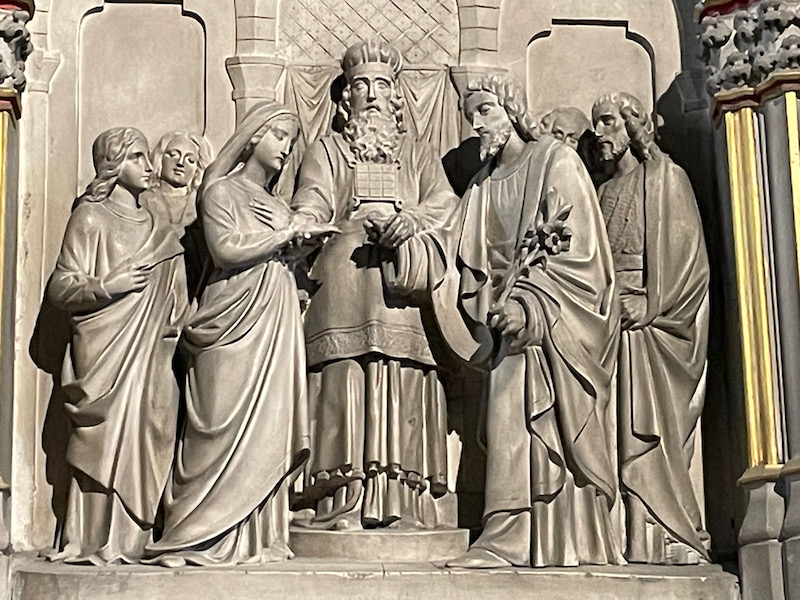
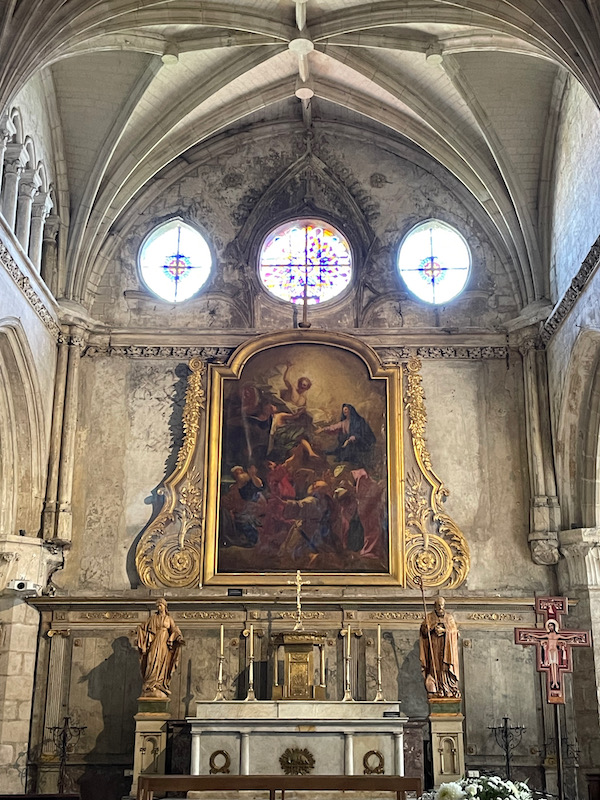
There are several embossed silver reliquaries, like this one, from the mid- 17th century, which attest to the former wealth of the Benedictine abbey of Sainte-Austreberthe.
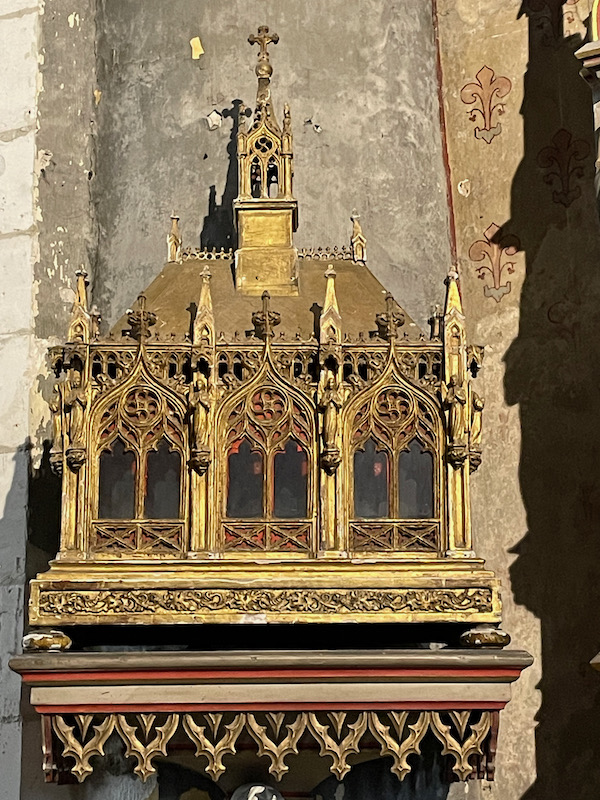
This Flamboyant Gothic building is the former chapel of the Hotel-Dieu, which was founded in 1200. The Hotel-Dieu was a hospital until 1992 and now it is a Hotel with a spa. Hopefully, they aren't giving massages in the old chapel!
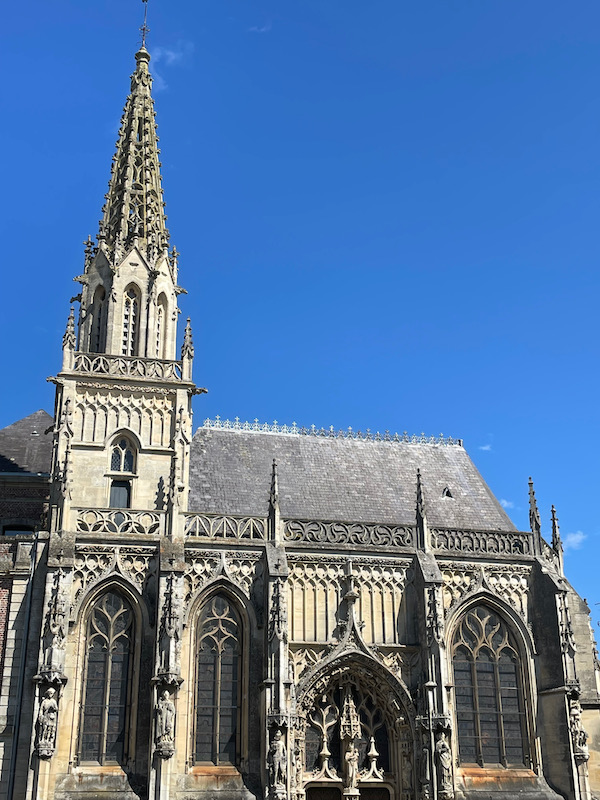
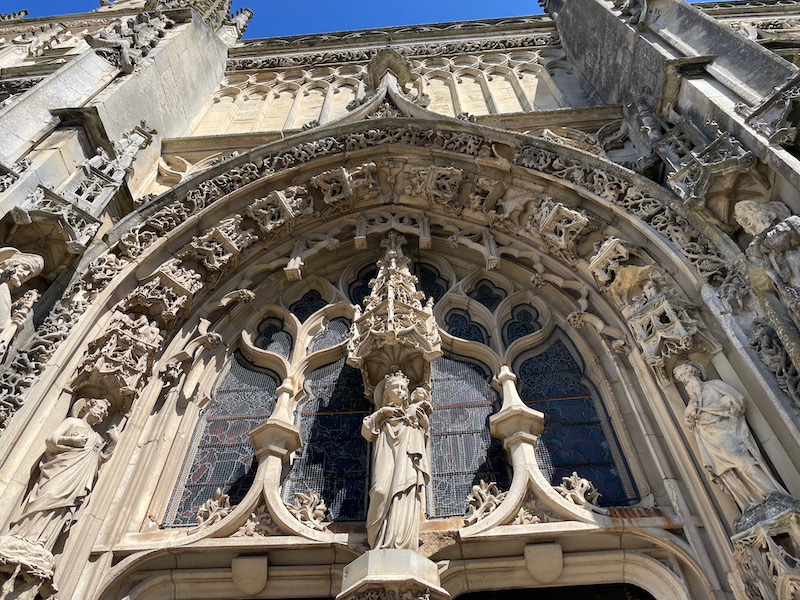
The former hotel of the Marshal of Acary-de-la-Rivière gets its name from the first owner, Viscount Henri Dominique d'Acary-de-la-Rivière. He was born here in 1745, became the general councilor of Pas-de-Calais in 1816, and made an honorary field marshal in 1823. In 1829, on his death, it passed to a family from Arras, then to the American painter Van der Weyden (some of whose works are still exhibited at the Roger Rodière museum), in 1900. Now it is an exhibition hall.
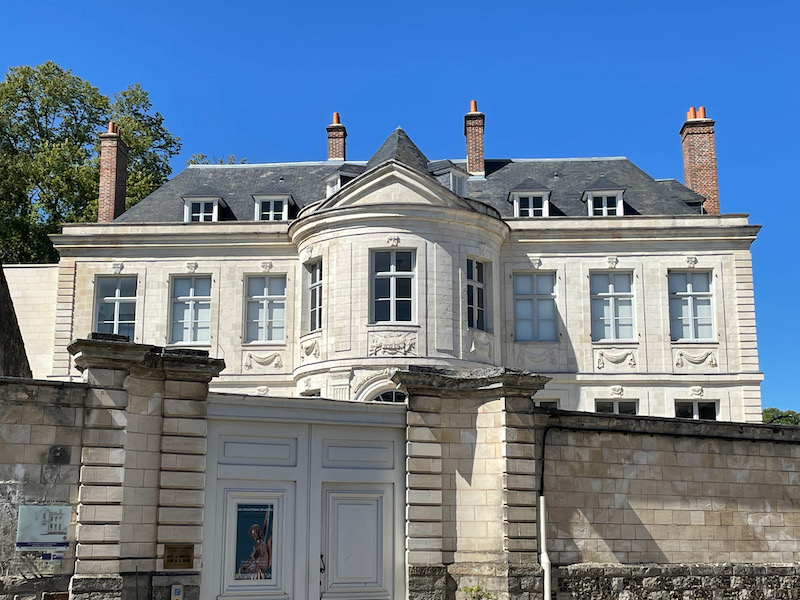
The Porte de Boulogne passes under the ramparts. It is the last remaining gate that allowed people to enter and exit the city.
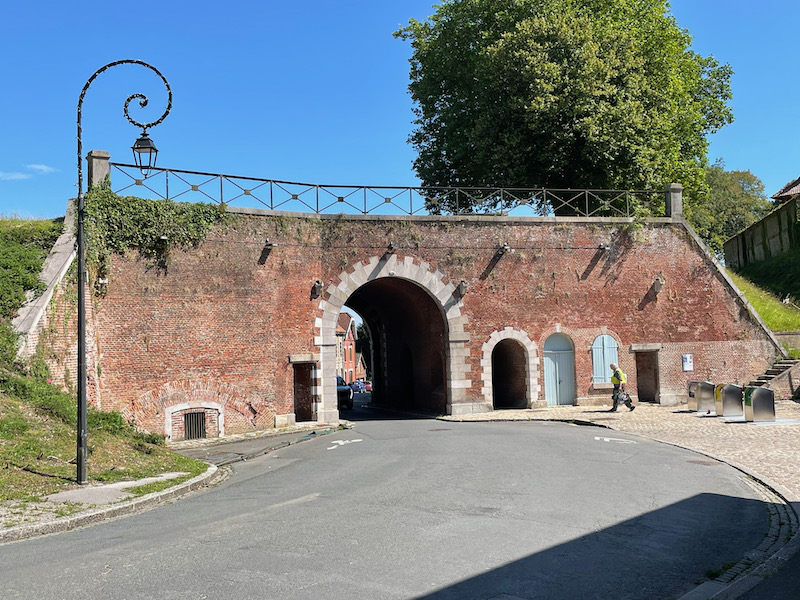
The Sainte-Austreberthe chapel dates from the 18th century and used to be the main church of an abbey. The abbey was closed and it was turned into a variety of things. All that is left of the church is the façade, which isn't really in good shape. It is now an exhibition center (I think).
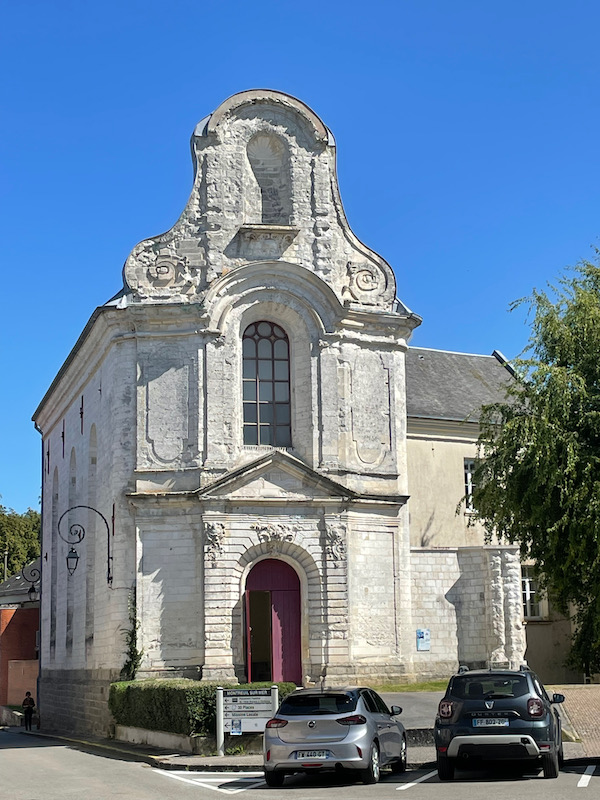
Rue Clape-en-Bas is a very short cobbled street with some of the oldest houses in the town. These 16th-century workmen's cottages were built of mud. They took their name from the sewers that served the buildings. A clapet was the metal flap that stopped the water flowing back. They now house restaurants and artisan workshops.
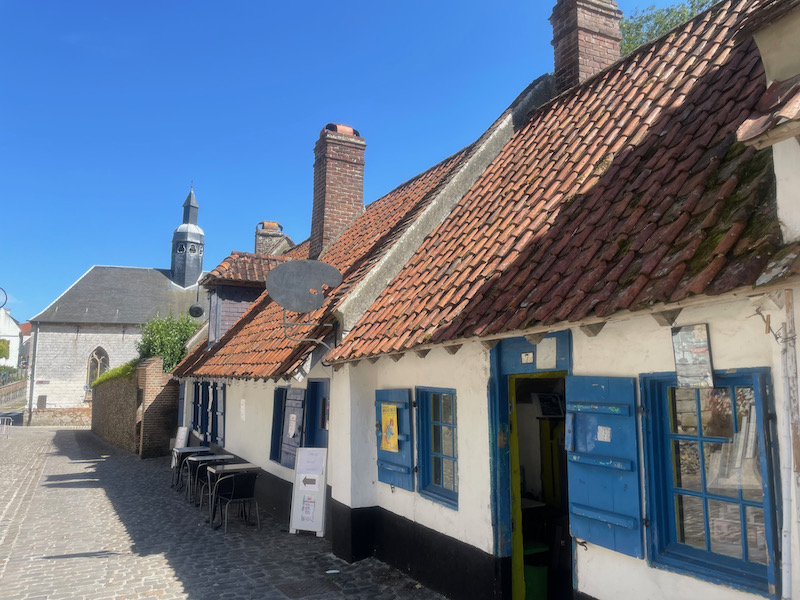
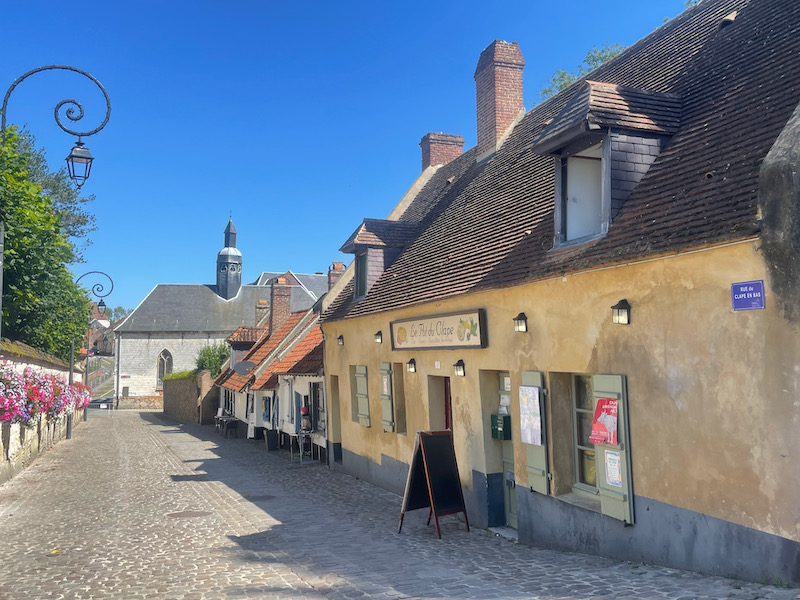
The town has done a really nice job of having a walking path all around the top of the ramparts, as well as a path of the outside at the bottom. We walked along the top for a little while and then popped back down at one of the various entry/exit points. These walls were built during the 13th century and most of the original walls still remain. There are still several towers or remnants of towers (like the one we saw) along the way. You can see how tall these walls are (hopefully) in the 1st picture.
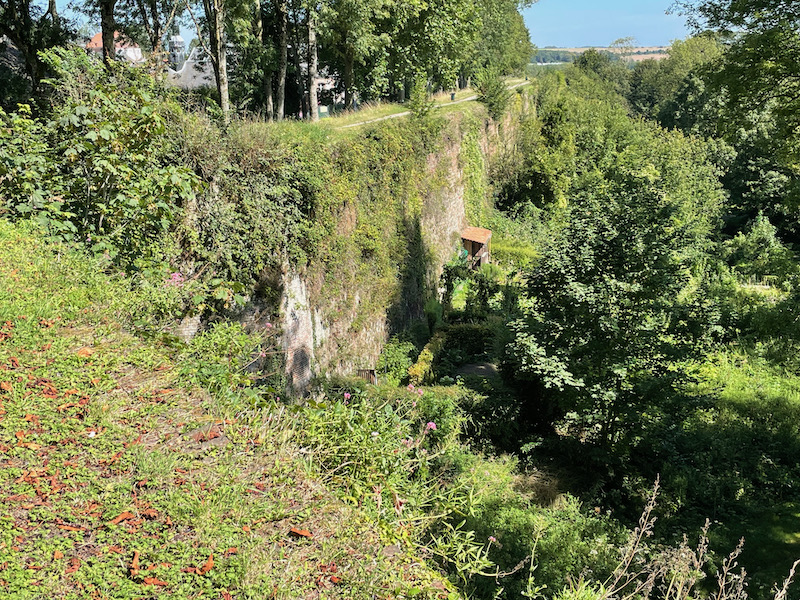
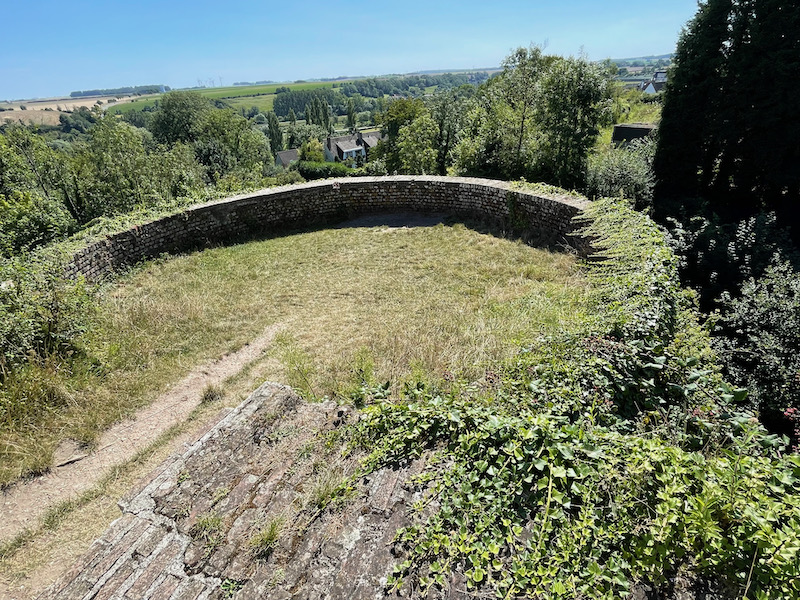
The Citadel is a 16th century castle. An original castle was here at the end of the 12th century, and then Philippe Auguste built a Philippian castle on the site of the current citadel. Originally, the castle was polygonal in shape, probably flanked by 8 towers, without a keep. Only parts of that still exist and additional towers, walls, and a mote were built.
